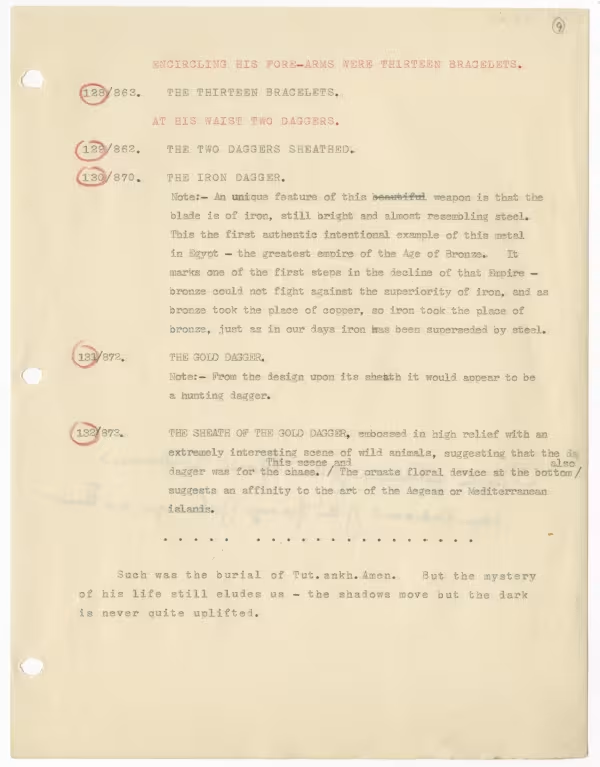TAA i.12.21.recto

© Griffith Institute,
University of Oxford
(9)
ENCIRCLING HIS FORE-ARMS WERE THIRTEEN BRACELETS.
128|863. THE THIRTEEN BRACELETS.
AT HIS WAIST TWO DAGGERS.
129|862. THE TWO DAGGERS SHEATHED.
130|870. THE IRON DAGGER.
Note:- Ansic unique feature of this beautiful weapon is that the
blade is of iron, still bright and almost resembling steel.
This the first authentic intentional example of this metal
in Egypt – the greatest empire of the Age of Bronze. It
marks one of the first steps in the decline of that Empire –
bronze could not fight against the superiority of iron, and as
bronze took the place of copper, so iron took the place of
bronze, just as in our days iron has been superseded by steel.
131|872. THE GOLD DAGGER.
Note-: From the design upon its shex[?]/<a>th it would appear to be
a hunting dagger.
132|873. THE SHEATH OF THE GOLD DAGGER, embossed in high relief with an
extremely interesting scene of wild animals, suggesting that the da
dagger was for the chase. /<This scene and> The ornate floral device at the bottom / <also>
suggests an infinity to the art of the Aegean or Mediterranean
islands.
………………..
Such was the burial of Tut.ankh.Amen. But the mystery
of his life still eludes us – the shadows move but the dark
is never quite uplifted.